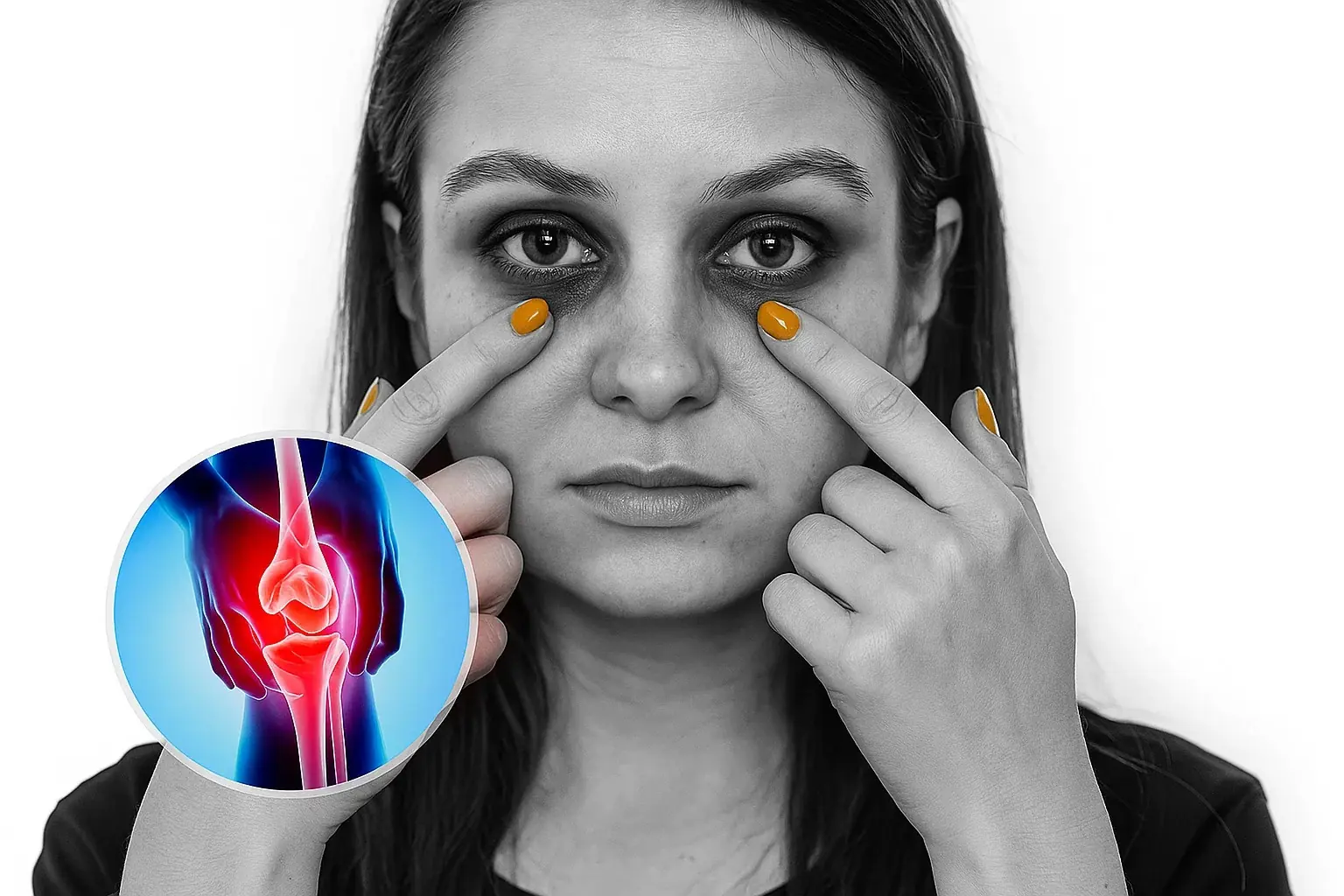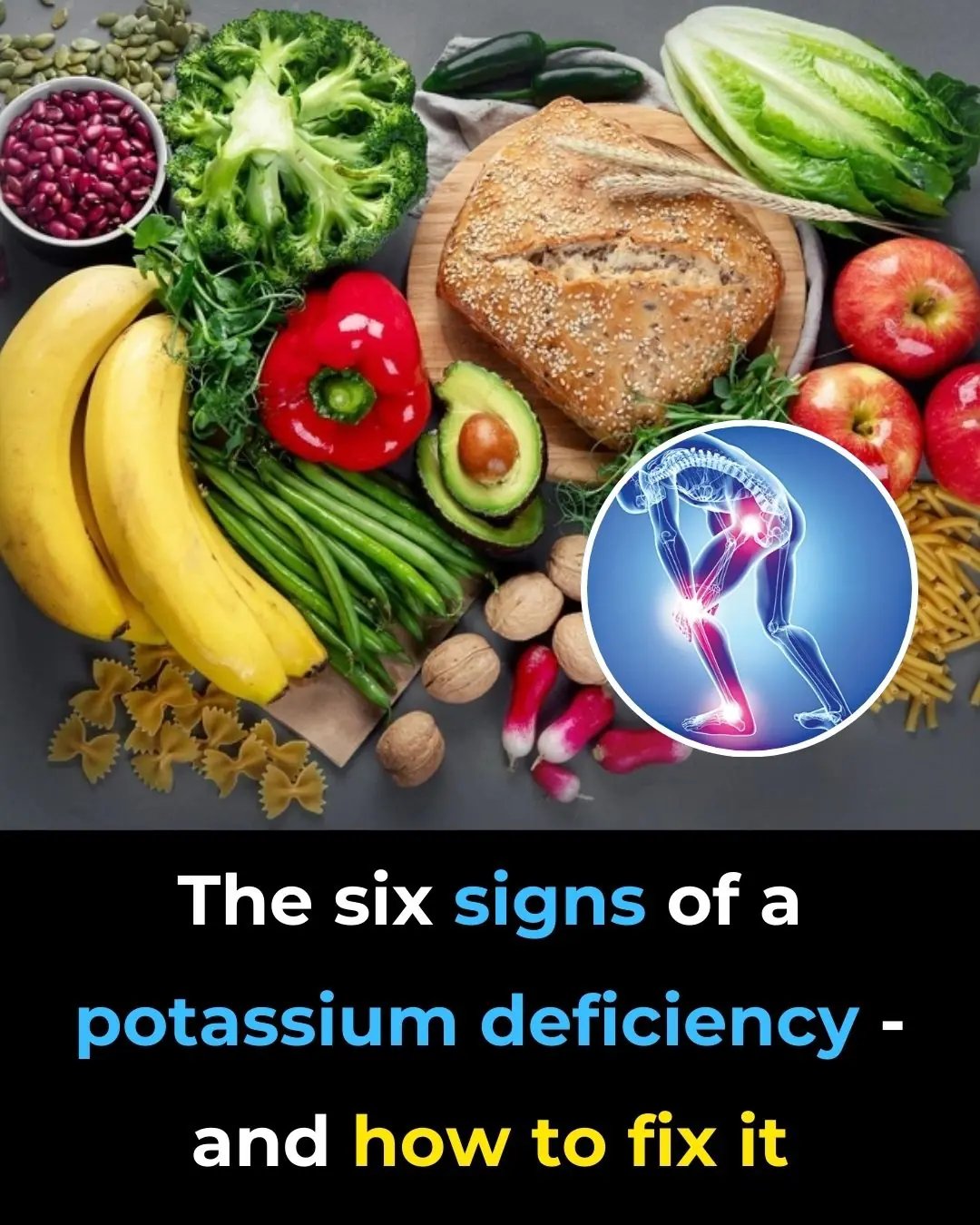
Dark eye circles might be a subtle health warning
Dark eye circles are far from rare — in fact, most people experience them at some point in their lives. While they can be purely cosmetic and temporary, they may also signal underlying health concerns that shouldn’t be overlooked. The skin beneath the eyes is thinner and more delicate than other areas of the body, making it especially prone to changes in color and blood flow.
Many cases are due to simple factors like fatigue, aging, or genetics, but persistent or worsening dark circles can be linked to nutrient deficiencies, circulation problems, or even allergic reactions. Understanding the range of possible causes is the first step toward finding the right solution.

Common and Less Serious Causes
- Hyperpigmentation
This harmless condition can develop gradually or suddenly. It often results from sun exposure, hormonal changes, allergic dermatitis, swelling, or the natural aging process. Hyperpigmentation causes excess melanin production in the skin, which can deepen the shadowy appearance under the eyes. Although it’s not dangerous, it can be improved with proper skin care, dietary adjustments, and sun protection. - Fluid Retention or Allergic Reactions
Swelling under the eyes may stem from seasonal allergies, sinus inflammation, or fluid buildup due to high salt intake or hormonal fluctuations. The delicate under-eye tissue easily traps fluid, creating puffiness that casts a shadow and makes circles appear darker. - Aging and Loss of Skin Elasticity
As we age, the collagen and elastin in our skin naturally break down. Gravity further weakens the structure beneath the eyes, causing sagging skin and fat redistribution that make dark circles more noticeable.
More Concerning Health-Related Causes
- Poor Circulation
When blood flow slows, the blood beneath the thin under-eye skin can appear darker. A simple test is to gently press the area with a finger — if the skin lightens and then quickly darkens again, sluggish circulation may be involved. - Food Sensitivities
According to the Mayo Clinic, certain food intolerances or allergies — especially to preservatives, dairy, or gluten — can trigger dark circles. These reactions may also come with other symptoms such as nasal congestion, bloating, or headaches. - Iron Deficiency
This is the most serious cause on the list. Iron is essential for producing hemoglobin, which carries oxygen throughout the body. Low iron levels reduce oxygen delivery to tissues, leading to poor circulation and a bluish or dark discoloration under the eyes. If your dark circles are accompanied by fatigue, frequent illness, dizziness, or pale skin, iron deficiency anemia could be the culprit.
Bottom Line
Dark eye circles aren’t always a sign of poor health, but they shouldn’t be ignored if they persist, worsen, or appear alongside other symptoms. Simple lifestyle changes — such as improving diet, getting enough rest, and addressing allergies — may help. However, if you suspect a nutrient deficiency or circulation problem, seeking medical advice can ensure timely diagnosis and treatment.
News in the same category


How to Exercise Safely When You Have Atrial Fibrillation

How to Get Rid of Dead Dry Skin on Feet

Foods to Eat if You Need to Poop – The Best Natural Laxatives

How to Make Onion Juice for Hair Growth & Strong Hair

3 Best Ways to Boil Sweet Potatoes for Maximum Flavor

Top 13 Inflammatory Foods You Should Avoid (Replace with These)

Why You Should Drink THIS Warm Turmeric Water In The Morning

14 Warning Signs of Low Magnesium Levels and What to Do About It (Science Based)

The Six Signs Of A Potassium Deficiency – And How To Fix It

Liver Damage Linked to Supplement Use Is Surging, Sparking Scientific Alarm

Get Rid of Throat Mucus Faster With These Home Treatments (Evidence Based)

14 Warning Signs of Low Magnesium Levels and What to Do About It (Science Based)

Powerful Healing Benefits of Cloves You Probably Didn’t Know: Natural Remedies for Improved Wellness
Cloves are more than just a fragrant spice — they are a time-tested natural remedy packed with healing properties. From soothing digestive troubles to protecting against infections, this tiny bud can be your daily wellness booster.

What Does a Bl00d Clot Feel Like? Experts Share Common Signs and Symptoms
Every year, close to a million Americans face the dangers of blood clots — often without realizing it until it’s almost too late. Recognizing the early warning signs could be the difference between life-saving treatment and a medical emergency.

5 Types of Pain That Should Never Be Ignored

Scientists Warn of a Silent Epidemic: Men’s Testosterone Levels Are Plummeting — And Here’s Why

Striking simulation illustrates the progression of death from cancer

6 types of foods that negatively affect your thyroid
News Post

10 Types of Toxic Friends to Avoid

Index Finger Length: Personality and Fortune

5 Potential Health Benefits of Macadamia Nuts

How to Exercise Safely When You Have Atrial Fibrillation

How to Get Rid of Dead Dry Skin on Feet

Foods to Eat if You Need to Poop – The Best Natural Laxatives

How to Make Onion Juice for Hair Growth & Strong Hair

3 Best Ways to Boil Sweet Potatoes for Maximum Flavor

Underwater City Near 'Noah's Ark' Discovery Might Change The Bible Story We Thought We Knew

A Stranger’s Compassion That Changed Everything.

A Kentucky State Trooper’s Quiet Act of Compassion That Brightened a Family’s Day.

I Let My Lonely Neighbor Stay with Me While His House Was Being Repaired After the Storm, and It Didn't Take Long to Understand Why He Was Alone – Story of the Day

One Day, I Saw a 'Just Had a Baby' Sticker on My Boyfriend's Car, but We'd Never Had a Baby – Story of the Day

3 Family Drama Stories That Will Leave You Speechless

Top 13 Inflammatory Foods You Should Avoid (Replace with These)

Why You Should Drink THIS Warm Turmeric Water In The Morning

14 Warning Signs of Low Magnesium Levels and What to Do About It (Science Based)

Husband Sent Me & the Kids to a Hotel for a Week – I Thought He Was Cheating, but the Truth Was Unbelievable

The Six Signs Of A Potassium Deficiency – And How To Fix It
